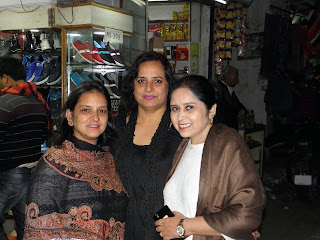The Rainbow Shield Bug or the Jewelled Bug is a beautiful critter!
Just this month, when I visited
the Sultanpur Bird Sanctuary with high hopes of catching the winged birds in
flight, I was disappointed! Very few birds had turned up so the Park was more
or less deserted, two of my brothers and
I being the first visitors that day. To make matters worse was that we thought
the park was closed since there was a lock hanging from the gate. A day of
disappointment however turned into a luckier day when one of the Park officers
turned up yawning and then let us in, that too without any fees since it was
the seventh of October, the last day of the Wildlife Week!
Where there are flowers, there will be Wasps of all kinds!
But then not all wasps like flowers, some like windshields of cars
Of course my two brothers and I
were the first to step into the park and the only wildlife we saw were a few Ox
that seemed more afraid of us. However we were determined not to be
disappointed and so decided to look for anything that would be interesting to
photograph. And then my eyes were drawn to a few dragonflies flitting in the
air, and my oh my, were they not simply amazing! I had stuck on a 55-250 mm
lens on to my camera, so that was it, I could not get too close of the
dragonflies, but then, I guess I was able to take quite a few good shots! I
guess we were so drawn to the dragonflies that we were not even bothered by the
absence of migratory birds in the park.
This butterfly was caught napping on the door of a car
It was after I had reviewed the
snaps of the dragonflies that I was
reminded of the large number of photographs I had taken of insects over the
years, and sure when I looked at them, I
decided that I would put them on my blog. While looking at some of the exotic
bugs, I learned that the Death’s Head Hawkmoth called so because it bears on
its thorax a stunning likeness of the human skull. There is a superstitious
myth associated with this species of the moth which states that it brings bad
luck, so much so that an Aristocrat in England went mad after two such moths
were discovered in his chamber.
The Death's Head Hawkmoth is a fierce looking insect indeed!
While no doubt insects are small
and you require specialised lenses and a tripod to photograph them, you might
manage perfectly well with an 18-55 mm zoom lens, or even a 55-250 mm zoom
lens. I guess all it requires is a steady hand, the correct lighting, and, I
guess luck! In many cases when you are shooting in the wild, and not in the
laboratory, you might not have many options! Macro-photography is very
interesting indeed, and when you have a well-focussed snap of a critter with
those glaring eyes, then sure enough, you get a thrill. It might also be a good
idea to show someone one of your favourite critter snaps only to hear her gasp
with fear!
This is a snap of a spider that has gorged itself on a fly
Thus it was while going through
some of my old snaps of critters and researching them that I came across one
that is called Jewel Bug, or even Rainbow Shield Bug. It is one of the
most colourful insects that I have ever photographed, coming next to the Hawkmoth. That reminds me about how I
was able to get a photograph of the Hawkmoth.
I was in school that day, and while passing through the corridor I came
across a strange insect stuck to an essay that had been written by a student of
mine. Moving closer, I was both repulsed and fascinated by this critter. The
colours on its wings were so attractive that I went as close to it as I could
dare and then took a few snaps with my mobile phone.
This is a Hawkmoth that is more beautiful than its cousin the Death's Head Hawkmoth.
There seems to be so much more
about photographing insects, because they can be found everywhere. You really
don’t need to go to a National Park and yes they might be found in your own
backyard if not your living room!
The Spider is feeding on a fly. The red eyes belong to the fly.

































